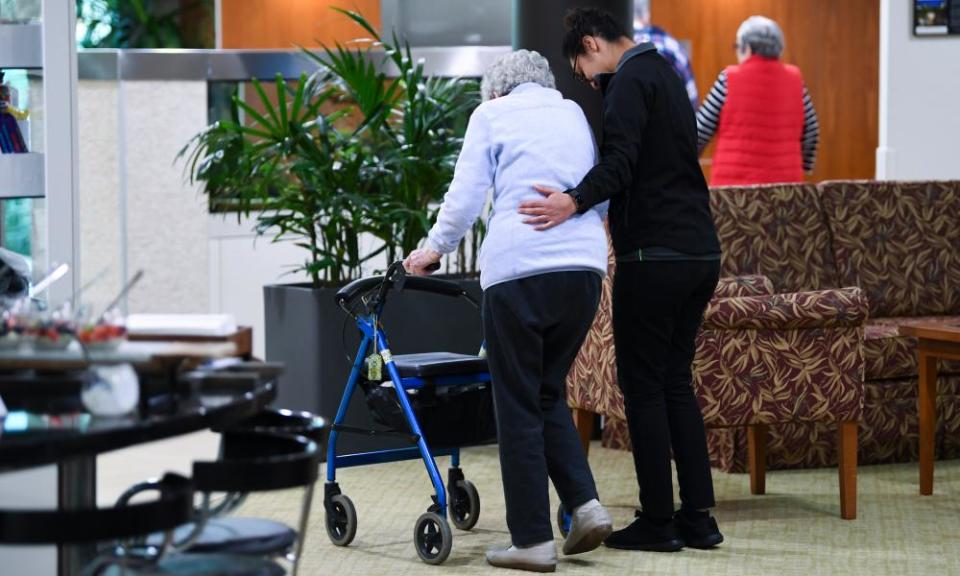Coalition still ‘developing options’ for Covid vaccine rollout to aged care workers under 50

The federal government still has no clear plan for vaccinating aged care workers under the age of 50 and the initial strategy of inoculating staff at their workplace is now “under review”.
Aged care workers, the main route of Covid-19 transmission into aged care facilities, have widely reported missing out on vaccinations despite being prioritised in phase 1a of the rollout.
The government had initially planned to send dedicated teams to aged care facilities specifically to vaccinate staff and establish offsite “pop-up” vaccination hubs.
The pop-up hubs never materialised and most workers said they never received a visit from the specialised teams.
Two months into the rollout, those plans have now been put on ice.
Related: Australian aged care workers relying on spare Covid vaccines and confusing advice, survey finds
The federal health department said the use of in-reach teams and pop-up hubs was now “under review” in the wake of the changed AstraZeneca advice for under-50s from the Australian Technical Advisory Group on Immunisation.
But the government has so far been unable to lock in another plan for vaccinating aged care workers under the age of 50.
“For aged care workers aged under 50, given the ATAGI advice, the government is developing options with the states and territories, medical experts and the aged care sector,” the department told the Guardian in a statement. “Updated advice will be issued to aged care workers once options to receive a vaccine have been finalised.”
Workers over the age of 50 are being told to go to general practitioner clinics to receive the AstraZeneca jab.
Until now, many aged care workers have relied on leftover Pfizer jabs not used when commonwealth teams visit facilities to vaccinate residents.
In some cases, workers have been left in limbo after receiving their first Pfizer jab, unable to secure a second dose.
The department said this approach was still available to workers and “generally” they would be able to get their second dose from leftovers on a future visit from commonwealth vaccination teams.
“Throughout the aged care rollout in residential aged care, workers can receive a Covid-19 vaccination at residential aged care facilities where excess doses are available following vaccination of all consenting residents,” the department said. “Generally people who receive a first dose in this way will receive their second dose when the vaccine team returns to the facility for the second dose clinic.”
Related: Comparing AstraZeneca vaccine blood-clot risk to odds of dying in a car crash unhelpful, experts say
The United Workers Union on Wednesday released a survey of 254 aged care staff about their experience with the rollout. It found about 85% had not received their first jab.
About 158 workers from more than 50 employers said their facilities were only offering workers Pfizer vaccines leftover after the vaccination of residents.
Fifteen of the workers were told to go to their GPs for their second dose, despite GPs only stocking the AstraZeneca vaccine.
Staff were always intended to receive the vaccination separately from residents, using different in-reach teams.
That was based on sound advice warning that combining staff and resident vaccinations could result in unacceptable staffing shortages.

 Yahoo Finance
Yahoo Finance 